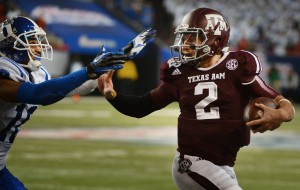
By GARRETT GASTFIELD
The issue of paying college athletes in return for what they do to generate money for their colleges continues to be well discussed year after year. College athletes are already compensated even if it isn’t from a paycheck.
Student athletes are on athletic scholarships. This essentially means they are being paid by receiving free tuition, room, meal plans, and money to partially pay for books and other miscellaneous expenses. At the larger universities, athletes have access to academic counseling, tutoring, life skill training and nutritional advice. College athletes that do not have full scholarships or even a partial scholarship, in revenue sports, still receive educational benefits.
In addition to the educational benefits of being a college athlete, they also receive free professional coaching, training, and physical therapists and athletic trainers. Adding up all of the benefits would average between $50,000 and $125,000 per year depending on what type of sport the athlete participates, and the type and the size of the university.
It would be a tough to directly compensate athletes. For example, Central Michigan University would not be able to afford to pay as much as the University of Alabama. There would not be a competitive balance. It is unknown on whether bigger universities would be allowed to pay more than the smaller ones.
An argument for paying college athletes is that the college sports industry generates $11 billion in annual revenues and could afford to give their athletes a share. This is a myth. Only a select handful of university athletic departments make enough revenue to be self sufficient. According to a USA Today article, “Most NCAA Division I athletic departments take subsidies,” only 23 out of 228 Division I athletic programs ran a surplus in 2012. Football, men’s basketball and women’s basketball are generally the only sports that make money. This would force non-revenue sports to be dropped.
One of the biggest threats to the probability of the compensation of student athletes is Title IX of the Educational Amendments of 1972. It basically states that no person in the United States can be excluded from participation in, be denied the benefits of, or be subjected to discrimination under any education program or activity receiving federal financial assistance by the basis of sex. If Title IX applies to the compensation of student athletes, it would be impossible to pay only student athletes in revenue sports because that would include about 100 male student athletes and only 15 women. It must be evenly distributed under Title IX.
Due to these issues, going down the road to paying college athletes would be nearly impossible. College athletes are already compensated even if it is not in the form of a weekly paycheck. Their payment is through services they get for no or little charge. Compensation of college athletes directly is far from becoming a reality anytime soon, as it should be.